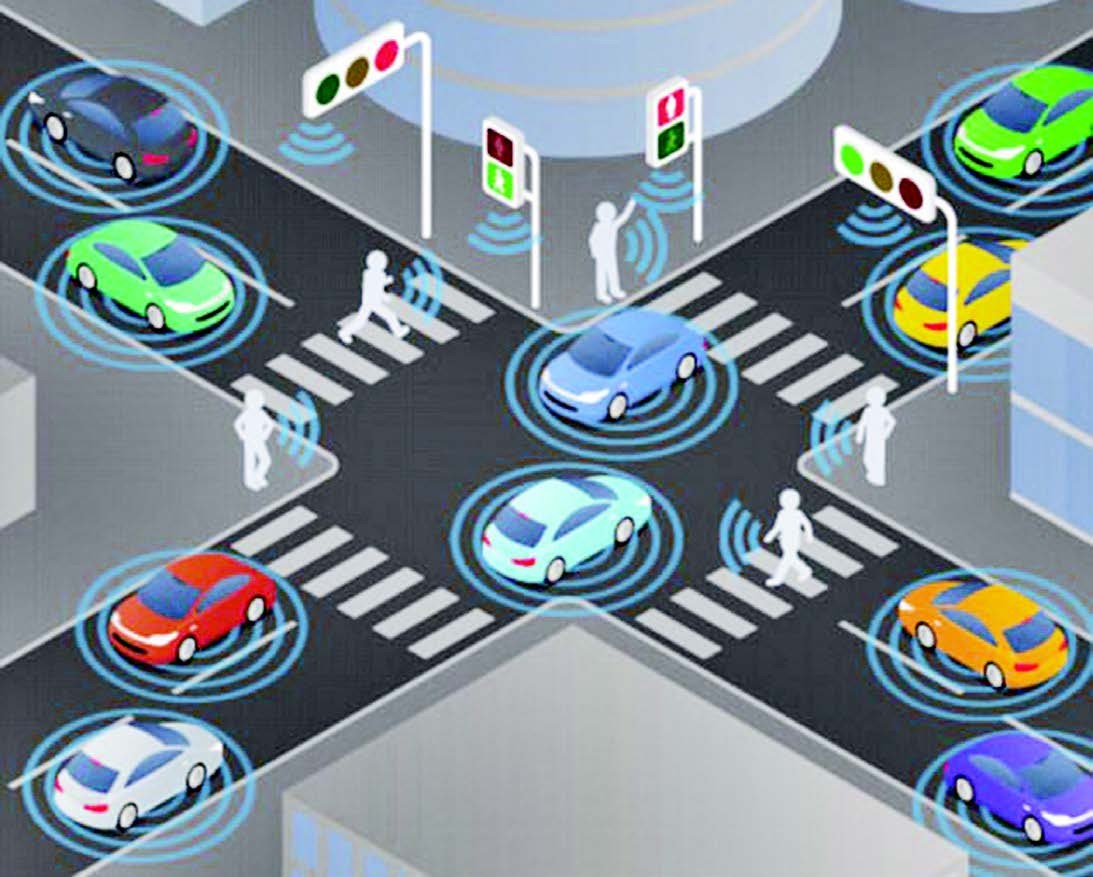Smart traffic lights go kaput

By A Staff Reporter
Kathmandu, Nov. 13: Nearly a dozen of smart traffic lights installed amidst much hubbub on March 28, 2018 have gone kaput after the traffic police department showed reluctance to operate them.
On March 28, the Department of Roads in coordination with the Metropolitan Traffic Police Division, had installed smart traffic light system at 14 locations of Kathmandu.
They all have now gone useless except in three places, including Baneshwore, and Maharajgunj, Superintendent of Police (SP) and spokesperson Rabi Kumar Poudel said.
“We could not use local and so-called smart traffic technology that could not become applicable and useful in Kathmandu’s heavy traffic system,” SP Poudel said.
Meanwhile, engineer at the Road and Traffic Unit at the Department of Roads Bandana Acharya blamed that the smart traffic lights system having its control room at the Traffic Division, failed to be operated properly as the authority had no technical knowledge to operate them.
“The system is going to be a failure as our traffic policemen showed reluctance to use it and operate it accordingly,” Acharya said while talking to The Rising Nepal.
The smart traffic light was designed by Yarsha Technology, a local software company in Nepal.
Currently, only four of 21 old system traffic lights in the Kathmandu Valley, including in Suryabinayak, Kaushaltar, Gatthaghar and Sallaghari in Bhaktapur are now in operation.
“We have handed over the system having its control room at the Traffic Division, but they are not operable and majority of them have completely gone kaput and this has happened because the traffic police are not giving priority to use it,” Acharya said.
“In coordination with the technology developers (Yarsha Technology), the traffic policemen were provided training to operate the lights on different dates, but we do not understand why they are not operating the system,” Acharya said.
She said the smart traffic light systems were installed first at Singha Durbar, two in Padmodaya Mod, Bagh Bazaar, Dillibazaar, Old Baneshwore, Gaushala, Mitra Park, two in Kalimati and three in Tinkune.
For this, the DoR had spent a budget of Rs. 10 million, she said. “When we become able to operate in smoothly, the system will can work properly in Kathmandu although the traffic policemen are blaming the heavy traffic of the vehicles in Kathmandu for its failure,” she said.
Meanwhile, SP Poudel said that the system that was installed would prove failure as the system could not come into application. The system is not friendlier for the increasing heavy traffic pressure.
“Instead of such technology, we need Intelligent Transport System (ITS)-based traffic light system which is an advanced and synchronizing technology system. In this system, when traffic light of one place gives a green signal, all other traffic lights will also give green signals at straight road section of Kathmandu and the vice-versa.”
The ITS-based technology and spacious traffic island are other requirements for the Kathmandu Valley to manage the traffic system, SP Poudel said.
Meanwhile, Acharya said that so far no concerned body is willing to bring the ITS system in Nepal. “We don’t have any resource and physical infrastructure to bring and implement the ITS system in Nepal,” she said.
To install ITS technology, it should be first laid down beneath the ground, which is not possible everywhere in Kathmandu road as Kathmandu roads are often dug out for several times. Installation of traffic lights was first done in 1969 A.D. Traffic lights were installed for the first time at Sundhara, New Road Gate, Singha Durbar and the southern gate of Narayanhiti Palace.
Recent News

Do not make expressions casting dout on election: EC
14 Apr, 2022
CM Bhatta says may New Year 2079 BS inspire positive thinking
14 Apr, 2022
Three new cases, 44 recoveries in 24 hours
14 Apr, 2022
689 climbers of 84 teams so far acquire permits for climbing various peaks this spring season
14 Apr, 2022
How the rising cost of living crisis is impacting Nepal
14 Apr, 2022
US military confirms an interstellar meteor collided with Earth
14 Apr, 2022
Valneva Covid vaccine approved for use in UK
14 Apr, 2022
Chair Prachanda highlights need of unity among Maoist, Communist forces
14 Apr, 2022
Ranbir Kapoor and Alia Bhatt: Bollywood toasts star couple on wedding
14 Apr, 2022
President Bhandari confers decorations (Photo Feature)
14 Apr, 2022











